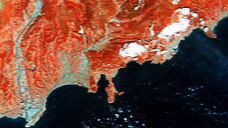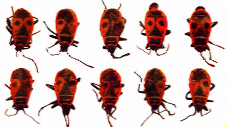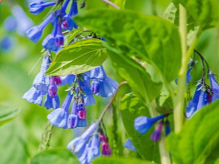http://www.rhci-online.net/radiogram/radiogram.htm
http://www.rhci-online.net/radiogram/radiogram.htm
RSID: <<2018-04-27T01:25Z MFSK-32 @ WRMI SYSTEM B-STREAM-9955000+1500>>
|
START IBC - ITALIAN BROADCASTING CORPORATION
mail: ibc@europe.com |
|
|
The original 1979 cassette tape with IBC jingles
"IBC DIGITAL" |
Another very old IBC paper QSL
|

RSID: <<2018-04-28T15:30ZMFSK-32
@
9400000+1500>>
On May 6, 0000-0200 UTC, the new
North America frequency for The
Mighty KBC will be 9925 kHz ...
Sending Pic:150x35C;

That's next Saturday night 8 to 10 pm Eastern Daylight Time.
Please report decode to
themightykbc@gmail.com

RSID: <<2018-04-28T16:01Z MFSK-32 @ 9400000+1500>>
Welcome to program 45 of Shortwave Radiogram.
I'm Kim Andrew Elliott in Arlington, Virginia USA
Here is the lineup for today's program, in MFSK modes as noted:
1:36 MFSK32: Program preview (now)
2:45 White House rejects US press freedom downgrade*
11:15 ESA's Sentinel-3b satellite*
18:02 MFSK64: Nuclear accidents make mutant bugs and birds*
25:28 Image of Virginia bluebells*
27:42 MFSK32: Closing announcements
* with image
Please send reception reports to
radiogram@verizon.net
And visit http://swradiogram.net
Twitter:
@SWRadiogram
VOA NEWS
White House Rejects US Press Freedom Downgrade
Steve Herman, W7VOA
25 April 2018
WHITE HOUSE - The White House is rejecting accusations President
Donald Trump and his administration are hampering freedom of the
press in the United States.
A media watchdog and advocacy group has dropped the United States
two places to 45th in its annual press freedom rankings, blaming
Trump's repeated verbal attacks on reporters, publications and TV
news networks.
"I think we're one of the most accessible administrations that
we've seen in decades," replied White House Press Secretary Sarah
Huckabee Sanders at Wednesday's briefing just hours after the
release of the Reporters Without Borders 2018 World Press Freedom
Index.
"I think by my mere presence of standing up here and taking your
questions unvetted is a pretty good example of freedom of the
press and I think it's ridiculous to suggest otherwise," Sanders
said, responding to a question from VOA.
The response did not satisfy the chief White House correspondent
for the Cable News Network, which has been repeatedly singled out
by the president as a purveyor of "fake news."
Jim Acosta, who sits in the front row for the White House press
briefings, asked Sanders whether she was trying to say, in
response to VOA's question, whether the Trump administration was
a champion of the free press.
"We support a free press, but we also support a fair press,"
Sanders replied. "And I think that those things should go hand in
hand and there's a certain responsibility by the press to report
accurate information."
The press secretary then said she frequently finds herself
"taking your questions in a tone that's completely unnecessary,
unneeded and frankly doesn't help further the conversation or
help the American people get any more information in a better
way, which is your job and my job."
Sanders then moved on to another reporter as Acosta attempted to
continue his line of questioning, but not before Acosta
interjected with a comment of his own that "the president's tone
toward the press obviously is not helpful at times, and I think
that's plain to see."
Such testy televised exchanges between prominent American
journalists and the White House press secretary - and sometimes
the president himself - have further polarized Americans about
both the conduct of the administration and the media since
Trump's surprise election victory in 2016, which followed an
unconventional campaign filled with the candidate's criticism of
the press.
Reporters Without Borders, for the second year in a row, dropped
the United States two places in its survey of press freedom in
180 countries, citing Trump's labeling of the press as an "enemy
of the American people," his routine use of the "fake news" term,
and the calling for media outlets' broadcasting licenses to be
revoked.
In a February 2017 memo, the then-director of the Federal Bureau
of Investigation, James Comey, wrote that Trump had suggested
reporters might need to be jailed to send a message about
classified information being leaked to the media.
Sanders on Wednesday called it "ridiculous" that the United
States fell in the index. In response, Margaux Ewen, the
organization's North American director, cited "an increase in
arrests, violent attacks, and online harassment at the local
level," pointing out there were 34 documented arrests of
journalists in the country last year.
"It's hard to believe how anyone could look at those numbers and
find a decline in press freedom in this country ridiculous,'"
Ewen told VOA.
The organization in its annual report blames Trump for routinely
singling out news organizations and journalists for their
coverage of him, specifically noting that the president retweeted
several violent memes targeting CNN.
According to Reporters Without Borders, the decline in press
freedom in the United States "is not simply bad news for
journalists working inside the country; the downward trend has
drastic consequences at the international level," noting that the
term "fake news" has become "a trademark excuse for media
repression, in both democratic and authoritarian regimes."
In the RSF 2018 index, Norway is considered the top nation for
press freedom while North Korea ranks last.
https://www.voanews.com/a/white-house-rejects-claim-us-press-freedom-downgrade/4364934.html
See also:
https://www.voanews.com/a/freedom-of-the-press/4363849.html
https://rsf.org/en/rsf-index-2018-hatred-journalism-threatens-democracies
Image: Reporters sans frontières (Reporters Without Borders)
world press freedom map. Red is bad, black is worse ...
Sending Pic:247x99C;

This is Shortwave Radiogram.
Please send reception reports to
radiogram@verizon.net
From Deutsche Welle:
Better vision with two 'eyes' - ESA's Sentinel-3b satellite marks
the next step in the Copernicus earth observation program
"Why build one when you can have two at twice the price?" So
goes the famous line (and government potshot) in the sci-fi
film "Contact." But sometimes, having two of something in
space is far, far better than one.
25 April 2018
Launched from the northern Russian cosmodrome Plesetsk, the
Sentinel-3b will traverse a stable orbit 814.5 kilometers (just
over 500 miles) above our Earth.
As the "b" in its name suggests, it is the second of two
Sentinel-3 satellites and forms a part of the European Space
Agency's Copernicus earth observation program. It will follow its
twin, the Sentinel-3a, as it circles around the earth – each
following the other with an even delay. Every two days, they can
cover the entire surface of the planet.
The most important tool in the Sentinel-3 satellites' kit? Their
Sea and Land Surface Temperature Radiometers (SLSTR). As you
might expect, they measure radiation and heat on the land and
sea.
In addition, they'll use an Ocean and Land Color Instrument -
another spectrometer that can track any changes of other details
on the surface of our planet.
Both satellites have also got an altimeter, which, beyond
measuring the sea level, can even determine the size of waves or
plant growth.
Finally a dual-channel microwave radiometer will detect
atmospheric disturbances and will use those readings to correct
and ensure the calibration of other instruments onboard.
Neat gadgets, but so what?
The Sentinel-3a and b will collect data that can be used to
improve meteorological forecasts and to research weather
phenomena. They can help, for example, in understanding the
mechanics of the periodical weather patterns of El Nino or La
Nina. Also, the satellites will provide valuable data about the
emergence of hurricanes and other tropical storms.
And the identically built Sentinel satellites can do even more:
They can measure algae growth in the oceans by detecting pigments
in the water. Such changes in the oceans have a direct impact on
fish and other sea animals, and this data can help provide
valuable information to fisheries and ecologists alike. It is
also possible to detect marine pollution from space or to measure
changes in the thickness of the ice cover in the polar regions.
As for the data the Sentinel-3 collects over land, it can, for
example, be used to measure drought or localized islands of heat.
And with its color spectrometer, the satellite can detect changes
in vegetation. The instrument does so by computing the amount of
photosynthetic active radiation absorbed by the leaves, which is
not only relevant to calculate the development of natural habitat
and forests, but is also of high relevance to farmers and
agriculture scientists.
For them, it can help yield better crops.
http://www.dw.com/en/better-vision-with-two-eyes-esas-sentinel-3b-satellite-marks-the-next-step-in-the-copernicus-earth-observation-program/a-43526811
Image: Satellite image of the region near Nice, France, showing
surface temperatures ...
Sending Pic:228x128C;

Shortwave Radiogram now changes to MFSK64 ...
RSID: <<2018-04-28T16:18Z MFSK-64 @ 9400000+1500>>
This is Shortwave Radiogram in MFSK64
Please send reception reports to
radiogram@verizon.net
From Deutsche Welle:
Nuclear accidents make mutant bugs and birds
26 April 2018
Biologist Timothy Mousseau has spent years collecting mutant
bugs, birds and mice around Chernobyl and Fukushima. In a DW
interview, he shares some surprising insights into the effects of
nuclear accidents on wildlife.
DW: Professor Timothy Mousseau, did you collect these mutant
firebugs?
Timothy Mousseau: Yes, the firebugs are really an eye-opener. My
research partner Anders Moller and I were visiting Chernobyl on
April 26, 2011. We were wandering around Pripyat collecting
flowers, to study their pollen, when Anders reached down to the
ground and pulled up this little bug with red and black markings.
He said: "Tim, look, it's a mutant - it's missing an eye spot!"
From then on we started collecting these little bugs in each
place we visited, from the most contaminated parts of the Red
Forest to relatively clean areas in abandoned villages.
Eventually we had several hundred of these little critters. It
was very obvious that deformed patterns were much more prevalent
in areas of high contamination.
This is just one of many similar anecdotes about the deformed
critters of Chernobyl. Literally every rock we turn over, we find
a signal of the mutagenic properties of the radiation in the
region.
DW: Is there a threshold of radiation below which there's no
effect?
TM: The impact of radiation on rates of mutation, cancer and
mortality varies a good deal by species. But statistically,
there's a simple relationship with dose. Small dose, small
effect; big dose, big effect. There doesn't appear to be a
threshold below which there's no effect.
Interestingly, organisms living in nature are much more sensitive
to radiation than lab animals - comparing mice raised in labs and
mice in the wild, exposed to identical levels of ionizing
radiation, the mortality rate among wild mice is eight or 10
times that of lab mice. It's because lab animals are protected
from most stressors - like cold or hunger.
DW: Are plants and trees affected too?
TM: Yes, we've collected a lot of deformed pollen. Seen a lot of
deformed trees, too. Pines often show growth-form abnormalities,
even in normal areas with no radionucleotide contamination.
Sometimes it's an insect infestation, sometimes a hard freeze at
the wrong time - you can find such anomalies anywhere.
But in contaminated areas of Ukraine, we have a correlation
between frequency of abnormality and the Chernobyl event. It's
pretty strong evidence. There was a paper showing a very similar
phenomenon in Fukushima. The trees there are very young, but will
likely also be twisted up in knots 30 years from now!
DW: What are the long-term effects of radiation on animal or
plant species in contaminated areas? They've had their genomes
altered. Will mutants persist?
TM: Well, in the long run, no. The thing is, some background rate
of mutations happens constantly in every species, even in
uncontaminated areas - albeit at a much lower rate than in areas
contaminated by nuclear accidents. So most genetic variants have
been tried already. The great majority are either neutral or
slightly deleterious. If a mutation had any benefit to offer, it
would already be there in the population.
DW: So the long-term effect of nuclear accidents on biodiversity
is ... none?
TM: Yes, that's right. Over evolutionary time, we expect that
populations will return to normal after the mutagen disappears.
Radionucleotides decay, hot sites eventually cool down, mutations
become less frequent again, and healthy animal and plant
populations recolonize the sites. So the genetic status quo ante
returns - except if mutations have occurred that permanently
enhance fitness, but that's very rare.
Some mutations might persist for a while if they're adaptive
during the hot phase. For example, there's selection for animals
whose cells produce a higher antioxidant load, which makes them
more resistant to the effects of ionizing radiation. But that
protection comes at a metabolic cost. After radiation levels die
down, those variants will be selected back out of the population.
Where things get complicated is when the harmful mutations are
recessive, that is, when it takes two copies [one for each
chromosome] for the expression of the mutation. Many mutations
fall into this category. They can accumulate in populations
because they're not expressed until two copies come into the same
individual [one from the mother, the other from the father].
Because of this, populations can be affected by such mutations
for many generations even after the mutagen is removed, and also,
via dispersal, in populations that were never affected by the
mutagen.
DW: How can radioactive contamination interact with other
problems that affect ecosystems, like habitat loss or climate
change?
TM: Certainly climate change is an additional stressor that is
likely to interact with radiation to affect populations. We have
demonstrated that while swallows in most places have moved their
breeding dates forward in response to warming, in the Chernobyl
area they are actually delayed. We hypothesize that this is due
to the stress from the radioactive contaminants.
The Red Forest near Chernobyl in Ukraine presents a high risk of
fire, as a lack of bacteria prevents the trees from decaying
The biggest fear at present is related to the observation of
hotter and drier summers in Ukraine, and the resulting increase
in number and size of forest fires. In summer 2015 there were
three large fires, and one of them burned through some very
contaminated areas.
We have predicted that such events could pose a significant
threat to both human populations and the environment via
re-suspension and deposition of radionuclides in the leaf litter
and plant biomass.
DW: In addition to the threat of catastrophic wildfire spreading
nuclear contamination, birds and mammals also move around. Do
they absorb radioactive elements in their food and water in
contaminated sites, carry them elsewhere, thus dispersing the
contamination more widely?
TM: Do animals move radionuclides? Yes! I did a study years ago
that showed very significant amounts of radionuclides are
exported every year by birds. But it seems unlikely that the
amount is enough to cause measurable health effects - unless
you're eating the birds. It is known that some people living
outside the Chernobyl Exclusion Zone are getting very significant
doses from hunting the contaminated wild boar that leave the
zone.
DW: How long will the contaminated zones around Chernobyl and
Fukushima be mutagenic and dangerous?
TM: Chernobyl was a nuclear fire and ongoing fission event for 10
days, with strontium, uranium and plutonium isotopes strewn into
the landscape. They have long half-lives, so many areas will
remain hazardous for centuries, even thousands of years.
Fukushima was largely a cesium event, and cesium radionucleotides
have a relatively short half-life. The area will mostly naturally
decontaminate itself within decades, at most within a couple
hundred years.
Timothy Mousseau is a professor of biological sciences at the
University of South Carolina in Columbia, South Carolina. He is
one of the world's leading experts on the effects of
radionucleotide contamination from nuclear accidents on wild
bird, insect, rodent, and plant populations. Interview: Nils
Zimmermann
http://www.dw.com/en/nuclear-accidents-make-mutant-bugs-and-birds/a-19098683
Image: Mutant firebugs ...
Sending Pic:227x127C;

This is Shortwave Radiogram
It's spring here in Virginia. This is an image of Virginia
bluebells by the shores of the Shenandoah River.
From https://bit.ly/2r1Uq3H ...
Sending Pic:219x164C;


Shortwave Radiogram now returns to MFSK32 ...
RSID: <<2018-04-28T16:27Z MFSK-32 @ 9400000+1500>>
This is Shortwave Radiogram in MFSK32 ...
Transmission of Shortwave Radiogram is provided by:
WRMI, Radio Miami International, http://wrmi.net
and
Space Line, Bulgaria, http://spaceline.bg
Please send reception reports to
radiogram@verizon.net
And visit http://swradiogram.net
Twitter:
@SWRadiogram
I'm Kim Elliott. Please join us for the next Shortwave
Radiogram.
|
Ending song: https://www.midomi.com/index.php?action=main.track&track_id=100875735538080334&from=voice_search John McDermott - Bluebells of Scotland |
http://www.rhci-online.net/radiogram/radiogram.htm
|
QTH: |
D-06193 Petersberg (Germany/Germania) |
|
|
Ant.: |
Dipol for 40m-Band & Boomerang Antenna 11m-Band |
|
|
RX for RF: |
FRG-100B + IF-mixer & ICOM IC-R75 + IF-mixer |
|
|
Software IF: |
con STUDIO1 - Software italiano per SDR [S-AM-USB/LSB] + HDSDR 2.76 stable [2017-02-02] - for scheduled IF-recording |
|
|
Software AF: |
Fldigi-4.00.12 + flmsg-4.0.3 images-fldigifiles on homedrive.lnk |
|
|
OS: |
German XP-SP3 with support for asian languages |
German W7 32bit + 64bit |
|
PC: |
MEDION Titanium 8008 (since 2003) [ P4 - 2,6 GHz] |
MSI-CR70-2MP345W7 (since2014) [i5 -P3560 ( 2 x 2,6GHz) ] |

|
RSID: <<MFSK32 ~ @1079 Hz >>
|
|
RSID: <<MFSK32 ~ @1493 Hz >>
|
|
RSID: <<MFSK32 ~ @1504 Hz >>
Sending Pic:200x129C;
|

